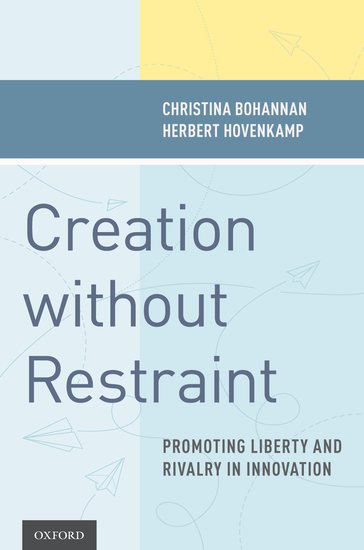By Christina Bohannan and Herbert Hovenkamp
The Supreme Court’s decision in Mayo Collaborative Services (Mayo Clinic) v. Prometheus Laboratories, Inc., 132 S.Ct. 1289 (March 20, 2012), cited Creation Without Restraint to reject a patent on a process for determining the proper dosage of drugs used to treat autoimmune diseases. The process involved administering the drug to a patient, waiting a certain period, and then drawing blood to measure the rate that the drug had been metabolized. If the level of a particular metabolite was lower than a specified range the drug dosage should be increased. If it was above that range the dosage must be reduced.
The problem with this patent was, first, that the correlation between the drug’s dosage and the extent of metabolism is a natural process, which cannot be patented. The patent called for additional steps of administering the drug and determining the metabolite level in the blood. But as the Court observed, these steps were well known and for many years physicians have adjusted drug dosages by measuring blood levels. The only thing that Prometheus had contributed was development of the precise formula, but the patent was not limited to that. As Mayo Clinic and many others complained, the patent had the potential to preempt and thus monopolize a process that was already well known in medical practice.
The Supreme Court acknowledged that a patent could include naturally occurring phenomena, but if it did so it must be limited to a very specific and novel technology or process. Otherwise, the patent would “inhibit much more future invention than the underlying discovery could reasonably justify.” It cited Creation Without Restraint, p. 112, for the observation that “One problem with [process] patents is that the more abstractly their claims are stated, the more difficult it is to determine precisely what they cover. They risk being applied to a wide range of situations that were not anticipated by the patentee.”
The Supreme Court also observed that identifying the right balance between rewarding inventors and preempting research by others could be specific to the technology, thus producing different results “from one field to another,” citing Creation Without Restraint at 98-100.
The overprotection of rights holders at the expense of consumers is causing a crisis in patent and copyright law. Patents often restrain the future innovations of others more than they contribute anything useful to our storehouse of knowledge.
Christina Bohannan and Herbert Hovenkamp are the authors of Creation Without Restraint: Promoting Liberty and Rivalry in Innovation, which considers how legal policy in many areas can be redirected to promote innovation. In it, they consider are the appropriate breadth of patent coverage and the problems of excessive patent abstraction and inadequate notice.
Subscribe to the OUPblog via email or RSS.
Subscribe to only law and politics articles on the OUPblog via email or RSS.
View more about this book on the ![]()
![]()



Recent Comments
There are currently no comments.